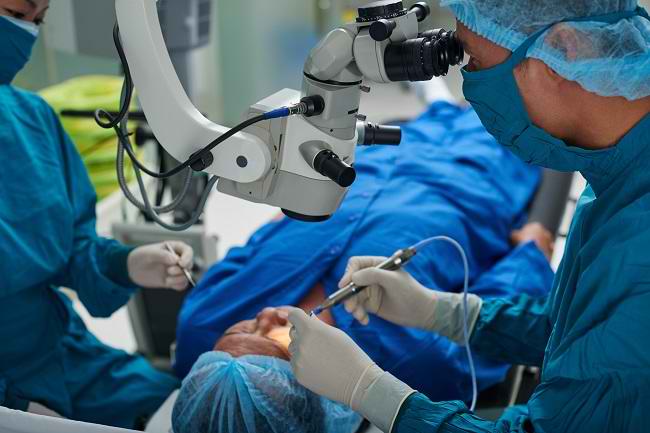Ewing's sarcoma or Ewing's sarcoma is a malignant tumor that appears in the bone or soft tissue around the bone. This type of cancer is very rare, but can be experienced by anyone, especially children and adolescents aged 10-20 years.
Ewing's sarcoma is a type of bone cancer in children. This cancer can appear and develop in any bone of the body, especially the femur, shinbone, upper arm bone, and pelvis. Sometimes the tumor can also appear in the tissue around the bone, such as muscle, connective tissue, or fat tissue. If treated quickly, the chances of healing Ewing's sarcoma are even greater.

Symptoms of Ewing's Sarcoma
Symptoms of Ewing's sarcoma vary, depending on the size and location of the tumor. The main symptom of this cancer is pain and swelling in the area where the tumor has formed, such as the arms, legs, pelvis, or chest. These symptoms appear when the tumor begins to enlarge and press on the surrounding tissue.
The pain can last for weeks or months, and gets worse with exercise or at night. Sometimes the symptoms of cancer are accompanied by the appearance of a lump on the surface of the skin that feels warm and soft to the touch.
Ewing's sarcoma also has some additional symptoms, such as:
- Prolonged intermittent fever.
- The body feels tired easily.
- Loss of appetite.
- Drastic weight loss.
- Pale.
- Broken bones for no apparent reason.
- Paralysis or urinary incontinence, if the tumor is located near the spine.
When to go to the doctor
Immediately consult a doctor if the symptoms mentioned above appear. Symptoms of Ewing's sarcoma can resemble the symptoms of other diseases, so an examination needs to be done so that cancer can be detected early and treatment steps can be taken immediately.
If the treatment is successful in eliminating cancer cells, the patient is advised to continue to undergo regular check-ups for several years. This needs to be done because Ewing's sarcoma is at risk of reappearing, even though the patient has been declared cured.
Causes and Risk Factors of Ewing's Sarcoma
The exact cause of Ewing's sarcoma is not known for certain, but this condition is thought to arise from a genetic mutation that occurs after birth.
Several studies have shown that Ewing's sarcoma cancer is not linked to heredity, radiation exposure, harmful chemicals, or environmental factors. Therefore, the risk factors for this cancer are also unknown.
Types of Ewing's Sarcoma
Based on the location of the appearance of the tumor, Ewing's sarcoma cancer is divided into several types, namely:
- bone tumorEwing's sarcoma occurs in any part of the bone, such as the femur, pelvis, ribs, or collarbone.
- Soft tissue tumorsThese sarcoma tumors arise in the soft tissues around bones, such as muscle or cartilage.
- Primitive neuroectodermal tumor (PNET)Ewing's sarcoma is a type of tumor that forms in nerve tissue in various parts of the body.
- Tumor AskinAskin tumor is a type of PNET sarcoma tumor that occurs in the chest.
Diagnosis of Ewing's Sarcoma
The doctor will ask for symptoms and check for lumps or body parts that have abnormalities. Next, the doctor will use a scan to detect the size and location of the tumor. The types of scan tests performed include:
- X-ray photo
- CT scan
- MRI
- PET scan (positron emission tomography)
To confirm the diagnosis and detect the severity of the cancer, the doctor will perform a biopsy. Through this procedure, the doctor will take a sample of tumor tissue for later examination in the laboratory.
Stadium Ewing's Sarcoma
The stage of Ewing's sarcoma is determined based on the level of spread of the tumor in the patient's body. For some conditions, the stage of Ewing's sarcoma refers to the stage of bone cancer which is divided into four stages. However, to determine the type of treatment, doctors often use a simpler staging division. The two stages include:
- Localized Ewing's sarcoma (localized Ewing's sarcoma)The tumor has begun to spread to nearby body tissues, such as muscles and tendons, but has not spread to other parts of the body that are far from where the tumor started.
- Ewing's sarcoma metastasesEwing's sarcoma metastases)The tumor has spread to other parts of the body, such as the lungs, bone marrow, or other parts of the bone. Sometimes, the tumor also spreads to the liver and lymph nodes.
Ewing's Sarcoma Treatment
Ewing's sarcoma cancer treatment aims to maintain the function of organs affected by cancer, prevent long-term complications due to cancer treatment, and cure cancer patients.
The method of treatment given to each patient can be different, depending on:
- Tumor size
- The degree of spread of the tumor or the stage of the cancer
- Overall condition of the patient
- Patient choice
The following are some types of treatment that can be done to treat Ewing's sarcoma cancer:
Chemotherapy
Chemotherapy is a method of treatment using drugs to kill cancer cells and stop their growth. Chemotherapy is also used to reduce the size of the tumor, making it easier for surgeons to remove it surgically.
Operation
Surgery is performed to remove cancer cells, maintain the function of organs affected by cancer, and prevent disability. If the cancer has spread to other parts of the body, the doctor will remove part of it or amputate the part of the body affected by the cancer.
Radiotherapy
Radiotherapy method is done after surgery with the aim of killing the remaining cancer cells. Radiotherapy is also used as a substitute for surgery if the tumor is located in a part of the body that is difficult to reach, so surgery is not possible.
Sometimes, stem cell transplantation methods (stem cells) is done to replace bone marrow cells damaged by chemotherapy side effects. This treatment method is generally used in patients with advanced Ewing's sarcoma.
Complications of Ewing's Sarcoma
Ewing's sarcoma cancer can spread to other areas of the body, such as body tissue or bone around the tumor, bone marrow, or lungs. This condition makes the treatment and recovery process more difficult. Ewing's sarcoma is also at risk for recurrence within a few years of being treated.
Like other cancer treatments, Ewing's sarcoma treatment procedures can also cause side effects. One of them is the loss of limbs due to amputation procedures. Some of the other side effects of Ewing's sarcoma cancer treatment are:
- Heart or lung disorders.
- Impaired growth and development and understanding, especially in children.
- Sexual dysfunction and the inability to have children.
- The emergence of other types of cancer.
Prevention of Ewing's Sarcoma
There is no known way to prevent Ewing's sarcoma, because the cause has not yet been determined. This type of cancer is not inherited nor is it associated with certain environmental or lifestyle factors.
However, there are some simple steps that can be taken to reduce the risk of getting Ewing's sarcoma cancer, namely adopting a healthy lifestyle and conducting regular health checks to detect cancer early. A healthy lifestyle in question is maintaining an ideal body weight, eating healthy and nutritious foods, and quitting smoking.









